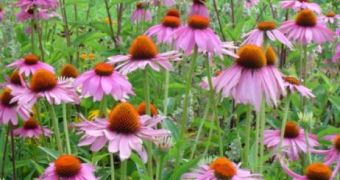In a world wrapped in myth, that of the Native Americans, the Sioux shamans fought with the evil spirits conquering the bodies of the diseased with more than sorceries. They employed Echinacea, a medicinal herb that has proven to reduce the risk of catching a cold with almost 50%, as showed by a new wide-scale review.
The echinacea supplements not only diminish the risk of a cold by 58 %, but can also decrease its duration by almost one and a half days, according to the meta-analysis led by University of Connecticut pharmacist Craig Coleman that compared the outcome of 14 published trials using echinacea. One approach showed that echinacea combined with vitamin C results in a mix that decreases the incidence of a cold by 86 %.
The Echinacea genus contains nine related daisy-like plant species native to eastern North America, with thorny flowers ("echino" means "spines" in Old Greek) and used in the traditional medicine of the Sioux and other Plains Indians as remedies for infection, snakebites and rabies. The vernacular names of the plants are sampsons, snakeroots or coneflowers.
The researches found over 800 products containing echinacea, in the form of tablets, extracts, fresh juice, tincture and tea. 3 species are the most commonly used: purple coneflower (Echinacea purpurea), narrow-leaf coneflower (E. angustifolia) and pale purple coneflower (E. pallida) and different organs of the plant enter in different products.
The way Echinacea increases the activity of the immune system against the cold virus it is not precisely known, but the three major ingredients of the plants are alkamides, chicoric acid and polysaccharides. The way these work, separately or together, or with the implication of other chemicals, remains to be studied. The team also warns that more research is required to assess the plant's safety before the plant could be recommended as a standard option against common cold.

 14 DAY TRIAL //
14 DAY TRIAL //